#Etc. objectively the best way to depict myself to those closest to me. honestly
Text
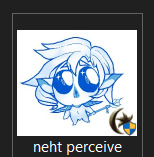
W.
Why do my CSP files have the openMW icon... was going through my emote folder for my finger mental mapping image... why is it like that...
#???#Really love being the most inherently violent dude and drawing myself Like That. 1 inch tall#Etc. objectively the best way to depict myself to those closest to me. honestly#ALSO. who knew... crawling out of the pit of depression causes you to get back into art. insane#Went. SO long struggling to half finish One Thing but I draw. so much. constantly for everyone now#It's Enrichment Babey.......
0 notes
Text
TMFU, Gaby’s fashion, and some feminist film analysis
Back when I slapped together a reblog post about the men’s fashion in The Man From UNCLE in between physio appointments, which somehow got like way more notes than I ever really expected or even wanted, I didn’t address the fashion of the lead female character, Gaby. It was outside the scope of the OP, and I didn’t feel like I had anything new or interesting to say about Gaby’s fashion, or lack thereof.
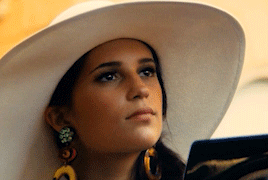
(My beta says those earrings are the ugliest thing ever. I disagree. It’s a wonder we’re still friends)
Anyways, we see only one brief scene of Gaby in her own street clothes, and a slightly longer sequence of her in her work clothes. The rest of the film, she is wearing clothes chosen for her by Illya. Saying “we just don’t have enough info” is a perfectly reasonable approach to this. So this was the other reason I had no intention of making this post.
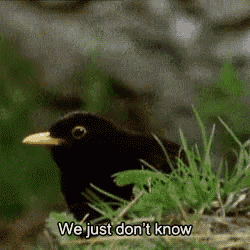
But then people started getting interested. Someone reblogged commenting about Gaby’s fashion, and I discovered that I have very strong opinions about something I’d previously claimed was unknowable, and it made me wonder what was going on in my brain.
Then I talked to some other TMFU friends who all seemed interested in what I assumed was common knowledge/nothing unique. So, they may have been feigning interest out of politeness, but it activated the art history side of my brain, and here we are now!
The boring stuff but please read this
I am not attempting to tell anyone how to interpret this film. I am not even trying to change people’s minds or persuade them to my thinking. All I am doing is sharing my thought process. I wasn’t even going to do this for Gaby until people asked. To this end, please don’t attempt to argue with me about this. I don’t want to argue. I won’t respond to it. If you disagree, then please, just move along.
And I’m going to remind people that I love TMFU. I love this movie so much it hurts. Why am I putting this reminder here? Because I am about to apply some critical analysis to it, and in places this will be cynical, and it will not always look kindly on the film. If you just want to exist in a happy “I love TMFU!” bubble and not hear anything less than 100% positive about the film (which is a totally valid choice, I don’t fault anyone for that), then don’t read. But don’t yell at me for being mean or criticizing the film, because I warned you.
Tldr; or, if I were still being graded for this stuff here’s my thesis statement
When analysing Gaby’s fashion, there exist considerations which don’t apply to the male characters. Namely, she is a woman and the male gaze is a thing. So I am very, very wary about taking at face value any expressions of traditional femininity in the choices made for her outfits, hair, makeup, etc. Therefore, when considering her character, I find it much more useful and informative to give more weight to the aspects of her appearance which do not connote traditional femininity, rather than those that do.
For readers who have studied enough media analysis to follow my thought based on that alone, there’s the thesis statement, y’all can go home (or at least skip to the end where I come to a conclusion). If you’re lost, then read on.
(mobile readers, the cut here might not work, and if so I apologize for what is going to be a very long post. Tumblr’s “keep reading” functionality is inconsistent at best, but I tried)
Context is for kings essential for analysing media in a meaningful way
(Or, some brief background. Stick with me here, we’ll get to the good stuff soon)
So, art doesn’t exist in a vacuum. Attempting to analyze any artwork (in this case a film) while disregarding the culture it was created in and the intentions of the creator is...not going to get you very far. Asking “what is art” is a question that quite frankly exhausts me at this point (looking at you, Duchamp) but the closest I’ve ever come to an answer is that the only thing that separates art from everything else is intent. And intention only exists within cultural context. So yes, intent and context don’t just matter peripherally, they are one of the biggest considerations one needs to make when analyzing works of art. The creator in this case being Guy Ritchie et al, the culture being British/American Popular Cinema in The Year of Somebody’s Lord Two-Thousand-And-Fifteen.
Everyone views and creates (if applicable) art through their own distorted, murky, imperfect lens of personal experience. And one of the most persistent Things in western art is that cishet men create art based on their experience of Being A Dude. This is crucial, because this lens of cishet male perspective literally underpins almost all of western culture including popular culture. And thanks to feminist film theorist Laura Mulvey, we have a name for this.
The male gaze and you
I’m going to quote Wikipedia here, because honestly this intro sentence sums things up rather neatly (with one exception which I will address momentarily).
In feminist theory, the male gaze is the act of depicting women and the world, in the visual arts and literature, from a masculine, heterosexual perspective that presents and represents women as sexual objects for the pleasure of the male viewer.
What does that all mean? That the Viewer and the Artist are both cishet men by default, and any women are Subjects of art. Women are viewed, never viewers. Men take action, women are subjected to actions. Furthermore, women are supposed to be pleasurable to view. By men. Since the Viewer is male by default.
But I would disagree that the pleasure is inherently based on women being sexual objects. That’s honestly a really damn limited read on the whole theory, and it’s one that Wikipedia itself contradicts later in the article. More broadly, cis men also derive other forms of pleasure from the presentation and viewing of female bodies, including aesthetic pleasure (the enjoyment of looking at beautiful things).
The theory of the male gaze is not without limits. As originally theorized, afaik it’s not particularly intersectional. It doesn’t really address queer perspectives or perspectives of POC. However, these issues are something I just can’t address here, unfortunately. And when looking at popular media, I still find the concept of the male gaze, imperfect as it may be, is a helpful means of analysis, so it’s worth having in your toolbox.
Circling back, the easiest way to sum up the male gaze, if you’re still not super clear on what it is, is with a demonstration.
Ever seen a shot like this in a movie?

And did you immediately roll your eyes? Feel gross? Congrats, you have just perceived and reacted to the male gaze.
Now we actually get back to TMFU
But the male gaze also shows up in many more subtle, insidious ways than fanservice-y boob shots. For this post, let’s focus on the following considerations, which might help everyone follow my thought process more clearly.
Gaby is a woman
She functions as the love interest of Illya in the script (I am not talking from a shipping perspective. What you ship does not matter for this discussion. I am talking about the narrative function of Gaby in the script as written. Put on your “cishet man” goggles for a moment)
Illya is a man who is attracted to women, specifically Gaby (again, I don’t care if your shipping conflicts with this. I am analyzing the film based on a literal reading of it as if I were a cishet man. Why? Because that’s who made the film. That’s who it’s “for”. I am all for queer readings of film--hell, I ship OT3, I myself have chosen a queer reading for how I interact with it, but I’m not critiquing people’s readings, I’m critiquing the film itself and to do that I have to critique its intentions and cultural context.)
Cishet men are traditionally only allowed to be attracted to women who are conventionally attractive. If they were to be attracted to anyone else it would destroy their fragile senses of self and their heads would explode or something. At least I assume that’s what must happen, based on how terrified they are of it.
Therefore, Gaby must be conventionally attractive, because it is literally required of her or otherwise the whole underpinning of western straight malehood crumbles and then where would we get such a pure, vast source of unadulterated toxic masculinity?
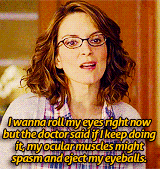
(Yes, this is a very cynical read on things. I’ve studied, like, three centuries worth of this bullshit. I’m tired. Let me be cynical.)
Or, to force myself to be less cynical, Gaby has to be pretty because...nope, this is still going to turn out just as cynical.
But what I will say in favour of this movie is that it gives Gaby and Victoria both a lot of agency and general awesomeness, which is quite unusual in this sort of big-budget action film, and it’s one of the big reasons I love it. I’m not saying that the entire film is sexist. On the contrary, there’s a ton of stuff to celebrate about how it portrays its female characters. But these aspects don’t change the cultural context, and we still have to consider the impacts of the male gaze.
Anyways, point being is that as filtered through the male gaze, Gaby is never given the option to, say, wear no makeup (or the appearance of such, as the guys are afforded, this being cinema where “no makeup” still means makeup) because that would look “ugly”. Instead she needs to have a “baseline of pretty” which is way higher than reality because she is not a real human being with her own agency, she is a character created by a cis male writer/director team in a film directed by a cis man in a genre that caters to cishet men.
Gaby doesn’t exist in a vacuum. She exists battling centuries and centuries worth of sexist convention.
Now then, remembering all of that, let’s actually look at her. There are woefully few good pictures so I’m going to have to piece things together a little. Starting with the coveralls.
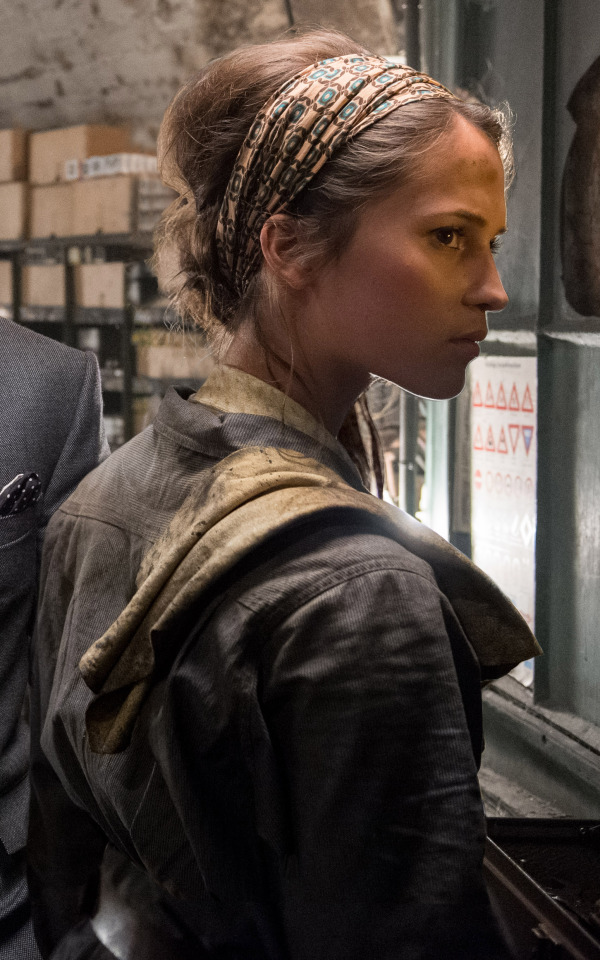

This is a great look, I love it. And I’m going to give Ritchie a lot of credit here because it would’ve been easy to go for a “Michelle Rodriguez in F&F sexy mechanic lady” look. In case I need to provide a visual:
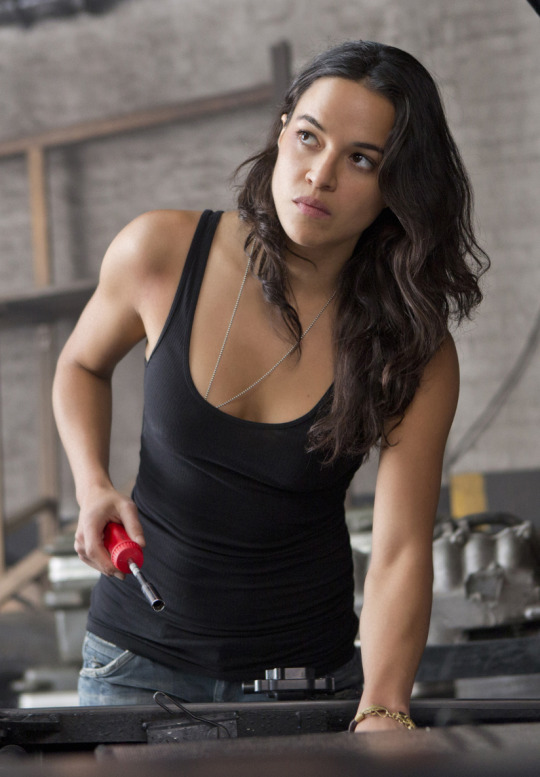
(Repeat above gif about rolling my eyes)
Now, to be clear, I am not making any judgement about the way any real-life women dress. I’m sure there’s plenty of female mechanics who have their hair down and wear tank tops while working. That doesn’t bother me. I don’t care if real life mechanics choose to do their jobs in a string bikini. Or in cosplay of the bee from Bee Movie. I don’t care (and quite frankly it’s none of my business) because they are real people who can make their own decisions. But what I am talking about here is a fictional character who does not have her own agency. I am critiquing how male creators choose to dress their female characters.
So I personally choose to read much more into the unpretty aspects of Gaby’s outfit, because these are not the “obvious” or “easy” things. Obvious and easy are “of course she wears makeup” and “of course her hair looks good” and “of course she doesn’t look like a swamp witch who bathes in mud and spends her days cursing passing men”. Those things don’t challenge or disrupt the assumption that women must look attractive for male consumption.
Gaby’s introduction to us is with her in a pair of grease-stained, baggy coveralls, not wearing any obvious makeup (again, this is cinema, so she is wearing makeup. For cinema the goal posts around “wearing makeup” always need to be moved from where they’d be irl). There’s very little here that screams ‘pretty’. And that is fascinating to me.
I don’t know how deeply Ritchie thought this through when giving final approval to the costume, hair and makeup. But unpretty is not the default here. It’s a choice
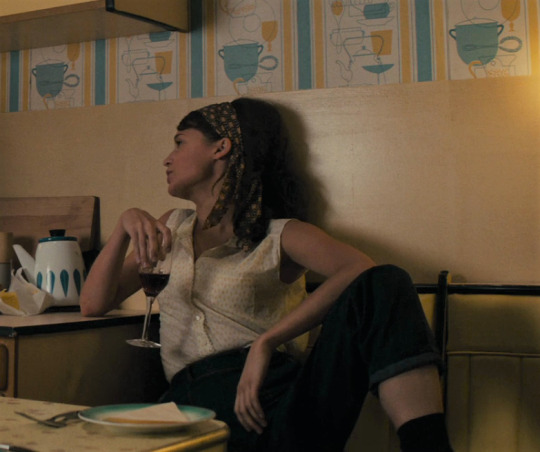
And look at this. This is the stance and dress sense (and socks!) of a woman who does not give a damn about looking good for the male gaze, whether the in-movie gaze of Napoleon, or the implied gaze of the viewer and creator. It’s not ‘pretty’. And this is the only time in the film we see Gaby in her own everyday clothes, as she only escapes East Berlin with the literal clothes on her back.
So how do I think Gaby dresses? I think that for the most part she dresses....like this. Practical. Comfortable. With a few simple touches of things she likes/finds pretty, perhaps, but not with a specific interest in being pretty. She dresses for herself, not for others. And if that isn’t something to aspire to, I don’t know what is.
#gaby teller#tmfu#the man from uncle#meta#costume design#male gaze#fashion#thank you to michael bay for providing me with such a good example of the male gaze
74 notes
·
View notes